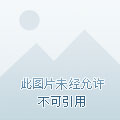IT Home news on December 13, DJI has occupied more than 80% of the global drone market share, many overseas companies also want to share a piece of the pie.

Japanese industrial drone developer ACSL announced that it has begun accepting orders for the small aerial photography drone "SOTEN". The drone was developed by ACSL on the results of the "Safe and Reliable Drone Basic Technology Development" project of the Japan New Energy and Industrial Technology Development Organization (NEDO).
The first feature of SOTEN drones is "the use of safe drone protection technology made in Japan", based on the international standard ISO 15408 for safety products, to prevent data leakage and extraction, and to prevent hijacking of drones. The system also encrypts and communicates photographic and flight path data acquired by drones, so that the data collected through communication can also be protected by integration into the cloud in Japan. In addition, by using highly reliable products produced in Japan or sourced from overseas as the main components of the aircraft, the company has built a production system that can confidently provide drones that are expected to play a role in supporting social infrastructure.
The SOTEN drone also features a one-touch camera switching system that, in addition to the standard camera, can also be equipped with an infrared camera + visible camera, a multispectral camera and an optical zoom camera (under development).
With a maximum speed of 15 m/s, the camera is also equipped with SLAS/SBAS (sub-meter-level positioning enhancement service of the quasi-zenith satellite system MICHIBIKI), which enables highly accurate positioning in Japan and can take off and land safely in cases where precise location information is required, such as disaster investigations.
LTE communication allows the drone to be controlled via the Internet. The drone can fly autonomously in remote areas such as mountainous areas and inside factories. By using offline maps, drones can fly automatically even in environments without internet by displaying offline maps on the control base station app.
The drone measures 637 x 560 mm when unfolded, 162 x 363 mm when retracted, and weighs 1.7 kg (including standard camera and battery). The maximum flight time with standard batteries is 22 minutes (with a standard camera, at a wind speed of 8 m/s).
IT House understands that in recent years, the United States and other countries have been working to ban or restrict the use of drones developed by Chinese drone maker DJI and other companies on the grounds of security risks. The Japanese government also announced in September 2020 that it will only purchase drones with security guarantees and will quickly replace UAVs that are already in use.